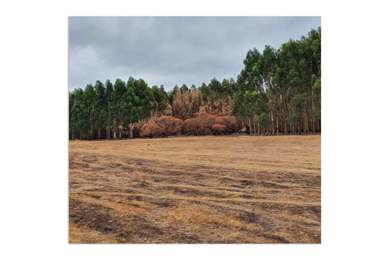Independent research from Airborne Research Australia (ARA) after the 2019-20 bushfires on Kangaroo Island has confirmed that plantations can act as a fire suppressant.
“From what I can see on our aerial imagery and Lidar it does not seem to support the opinion that the plantations were particularly bad in the fire situation. We have several examples where the native vegetation around, or even within plantations has burned, but the trees in the plantation are still alive,” said Professor Jorg Hacker, chief scientist at Airborne Research Australia.
ARA is a non-commercial, not-for-profit organisation that undertook aerial surveys of vegetation in the Adelaide Hills and Kangaroo Island after the summer bushfires.
KIPT Managing Director Keith Lamb said it was widely acknowledged that well-managed plantations without ladder fuels could act to suppress fire when it entered the plantation. Plantation timber comprised just 7 per cent of the area burnt in the summer bushfires – about 15,000ha of 210,000ha burnt.
“We’ve had several property owners come to us and tell us that the plantations actually saved their assets during the summer bushfires. And you can see at the back of a plantation like Jarmyn on the West End Highway, that there are unburnt trees after the Ravine fire, while assets over the road were not burnt,” Mr Lamb said.
Independent bluegum growers John and Cheryl Lewis confirmed that their plantation trees had protected parts of their farm during the Ravine fires in January.
“We are quite sure our house and sheds survived because of the bluegums. We had sheep that took shelter in native veg and they were burnt but the ones that sheltered in the plantation just wandered out the next day, unharmed,” Ms Lewis said.
West End resident Margi Prideaux confirmed the protective presence of the bluegums and said senior firefighters had agreed.
“Bluegums saved our vineyard. On January 3rd, if we had had nothing between us and the bush block next door we would have lost the vineyard. There’s a strip of plantation bluegums and you can see the fire hit it hard but then as you go through, the fire scar reduces. It absorbed the impact before it got to our vineyard,” she said. “We lost our home, but that was fire in a creekline of native vegetation,” Ms Prideaux said.
Photo: Burnt pasture and native vegetation at the Lewis bluegum plantation January 2020.







